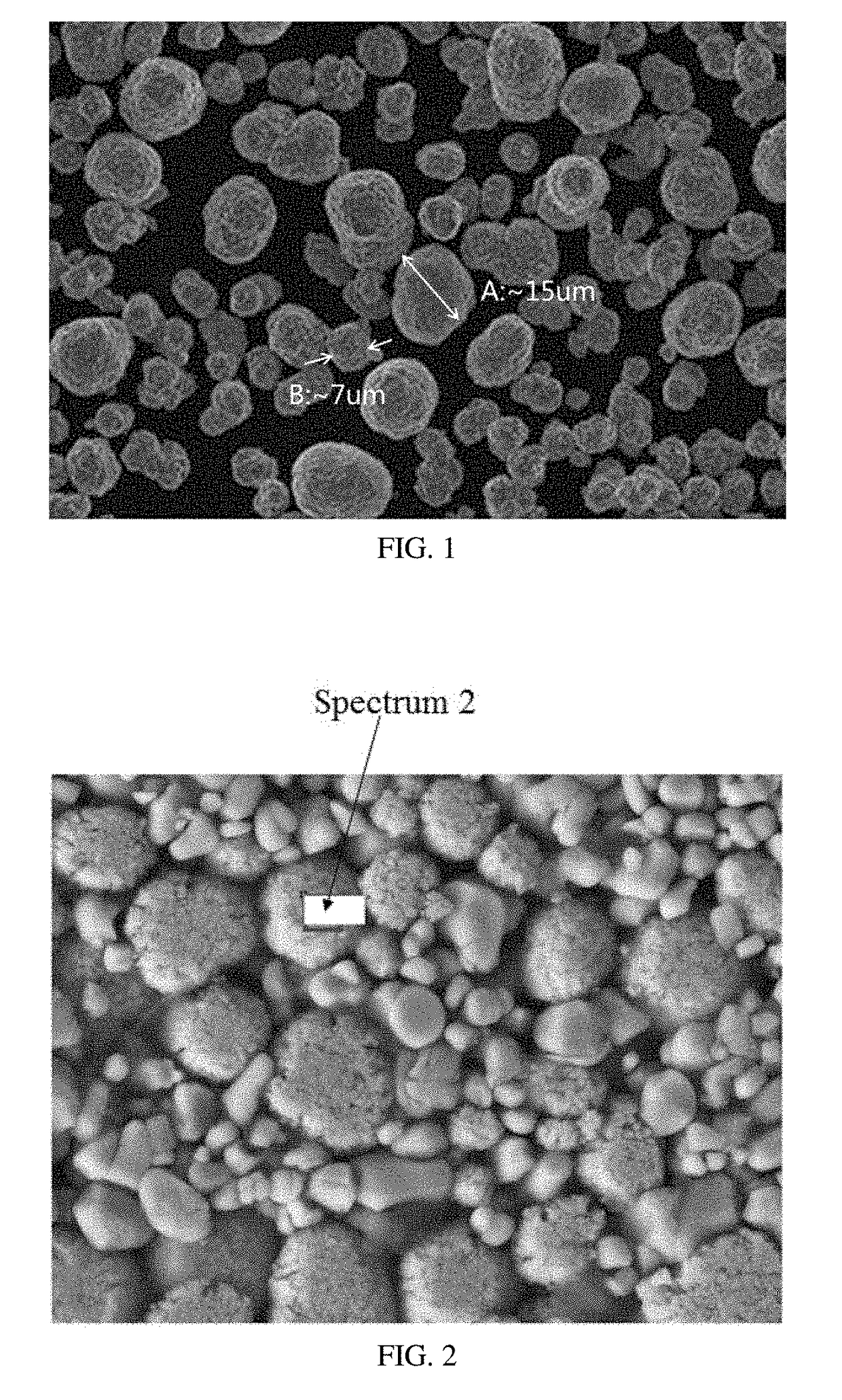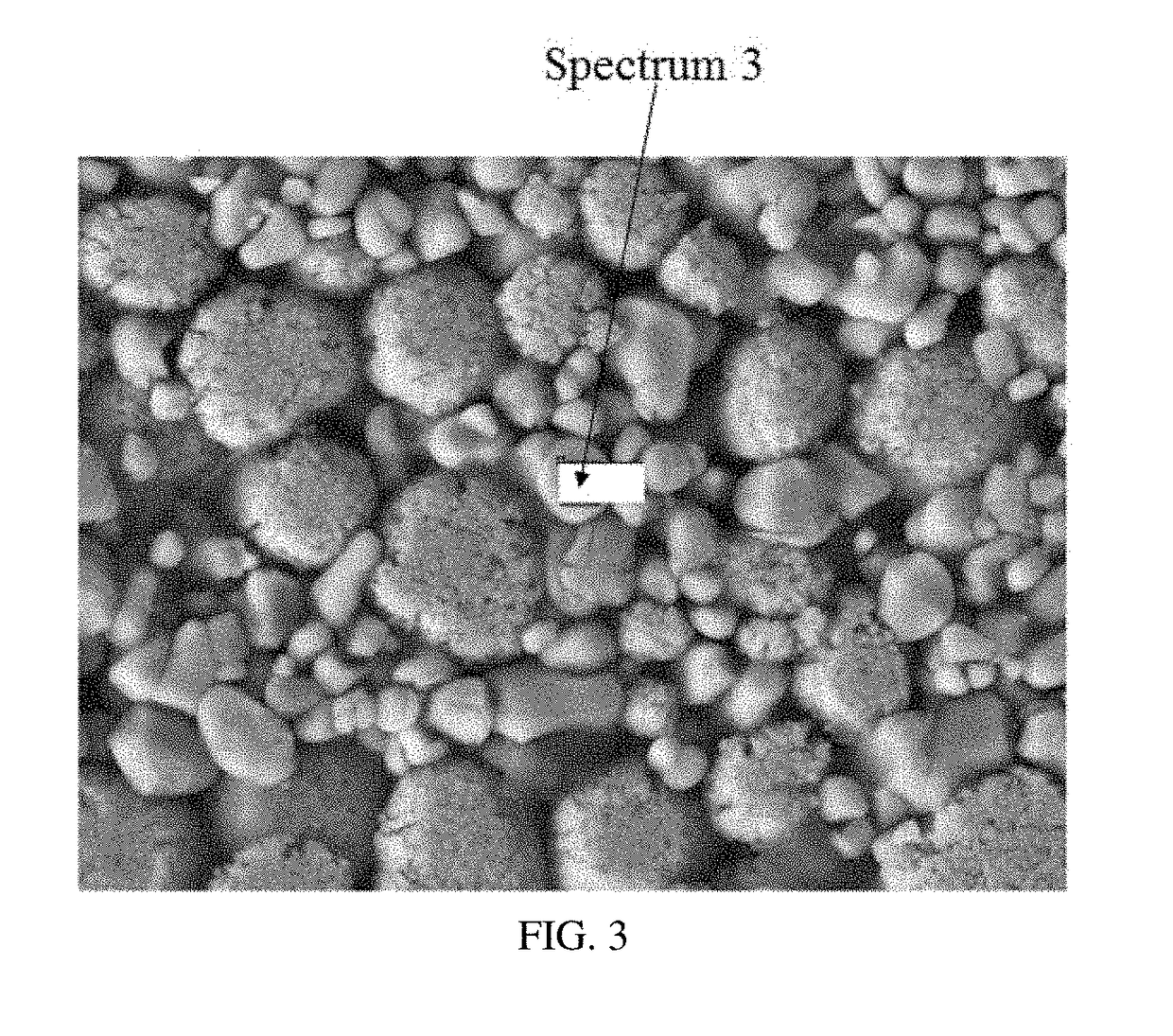Lithium ion battery and positive active material thereof
- Summary
- Abstract
- Description
- Claims
- Application Information
AI Technical Summary
Benefits of technology
Problems solved by technology
Method used
Image
Examples
example 1
Preparation of Positive Electrode Plate
[0028]Dissolving the positive electrode active material (a weight ratio of LiNi0.8Co0.1Mn0.1O2:LiNi0.5Co0.2Mn0.3O2 is 70:30), the conductive agent of acetylene black, and the binder of polyvinylidene fluoride (PVDF) in a solvent of N-methylpyrrolidone at a weight ratio of 94:3:3 to obtain a mixture. Stirring and dispersing the mixture uniformly to obtain a positive electrode slurry. Coating the positive electrode slurry on an aluminum foil, drying and cold pressing the aluminum foil, and obtaining a positive electrode plate.
Preparation of Negative Electrode Plate
[0029]Fully and uniformly stirring and mixing a mixture of a negative electrode active material of artificial graphite, a conductive agent of acetylene black, a binder of styrene butadiene rubber(SBR), and a thickening agent of carbon methyl cellulose sodium (CMC) at a weight ratio of 95:2:2:1 in a solvent system of de-ionized water to obtain a negative electrode slurry; coating the neg...
PUM
 Login to View More
Login to View More Abstract
Description
Claims
Application Information
 Login to View More
Login to View More - R&D
- Intellectual Property
- Life Sciences
- Materials
- Tech Scout
- Unparalleled Data Quality
- Higher Quality Content
- 60% Fewer Hallucinations
Browse by: Latest US Patents, China's latest patents, Technical Efficacy Thesaurus, Application Domain, Technology Topic, Popular Technical Reports.
© 2025 PatSnap. All rights reserved.Legal|Privacy policy|Modern Slavery Act Transparency Statement|Sitemap|About US| Contact US: help@patsnap.com


